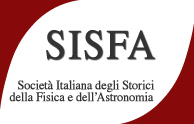Speaker
Description
At the turn of the 18th century, as a result of the development of musical instruments, the increase in the size of orchestras and the diffusion of music on European scale, the need to standardize the frequencies associated with notes began to be felt. This was a not easy task because there were no instruments to measure the frequency of a sound and standardization was essentially left to the ear.
Giuseppe Sauveur, the leading acoustician of the time, proposed two methods to achieve this goal in the early 1700s. The first was based on the theory of beats, which he was just beginning to understand. This method aimed to produce a sound of 100 Hz, the fixed sound, using an organ pipe. A second method was to find the equation for the frequency of a vibrating string as a function of the characteristic parameters. This law was known since the end of the 16-th, century but only in a relative way, i.e. it was known that the frequency was proportional to some parameters, but the constant of proportionality was not known and it was not easy to determine this quantity experimentally. Sauveur proposed an analytical method that led to an equation that was within 1% of the value now considered correct.
The following paper analyzes Sauveur's two approaches, using unpublished writings that exist in manuscript form in the procès-verbaux of the Paris Académie des sciences.

